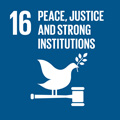- Docente: Milena Bernardi
- Credits: 8
- SSD: M-PED/02
- Language: Italian
- Teaching Mode: Traditional lectures
- Campus: Bologna
- Corso: First cycle degree programme (L) in Educator In Childhood Social Services (cod. 8775)
Learning outcomes
At the end of the course the student: - knows the main theoretical references and the cultural complexity of the history of the children's illustrations; - knows the intersections between visual and narrative in the production of books and illustrated books, and knows how to orient himself between the different languages and references to the figurative features of the editorial production for childhood; - knows and masters the instruments of pedagogical reflexivity with which childhood literature looks at the illustration; - is aware of the artistic, expressive and communicative potential of the illustrations; - knows the fundamental role of children's editorial production and has interpretative categories to make autonomous and conscious choices; - is able to design and activate paths centered around the drawing that take into account both the specific visual skills and the peculiar interaction with early childhood and, therefore, of the unique relationship between children and figures; - is able to deepen its knowledge about drawing in the history of childhood literature.
Course contents
Illustration and children’s literature
Representation of childhood and illustration
Art and image
Creative research and stereotypes
Illustrated novel, classic and contemporary novels
Picture book, silent book
Childhood, society, education and illustration
Theoretical research and illustration
Artists: G. Dorè, F. Gonin, A. Rackham, E. H. Schepard, B. Potter, C. Chostri, E. Mazzanti, Golia, U. Fontana, M. Sendack, E. Delessert, R. Innocenti, Lo. Mattotti, L. Zwerger, F. Negrin, A. Browne, Shaun Tan, R. Dautremer, H. Oxembury, C. Carrer, D. Sala…
Readings/Bibliography
The program includes:
- basic knowledge
- a monograph path chosen by the student
All students must study the following Critical essay :
S. Barsotti, L. Cantatore (a cura di), Letteratura per l'infanzia. Temi, forme e simboli della contemporaneità, Carocci, 2019
And 2 critical essay chosen among the following ones:
M. Bernardi, La voce remota. La fiaba, l'infanzia, l'eredità delle storie. Edizioni ETS, 2019; A. Faeti, Guardare le figure. Gli illustratori italiani dei libri per l’infanzia, Edizione Donzelli; A. Faeti, Specchi e riflessi, Edizioni Il Ponte Vecchio; M. Dallari, S. Moriggi, Educare alla bellezza, Ed Erickson; Hamelin, A occhi aperti, Edizione Donzelli; M. Terrusi, Albi illustrati, Ed. Carocci; M. Terrusi, Meraviglie mute, Ed. Carocci.
The student must choose:
three illustrators and one illustrated work for each.
Teacher website: for information on authors, books, pitcyurebooks.
Teaching methods
Lectures. Brainstorming, discussion and debate abaut literature, pitcturebooks, illustrattions, movie, theater, media. Storytelling.
Assessment methods
Oral test. The test will include the books indicated and, in addition, the student will have to prepare a personal reflection about a topic chosen among those treated.
Assessment:
- knowledge learned on discipline; the theoretical and interpretative references concerning children's literature;
- critical and methodological skills;
- interdisciplinary knowledge useful to analyze the children's literature;
- knowledge of educational contexts for early childhood.
Final score based on ../30 (18 is considered the minimum to pass the exam).
Inscription to the exam on Almaesami website.
If rejected at the exam, it is possible to have a second chance.
Teaching tools
Reading aloud, Storytelling, books, picture books, videos, etc
Office hours
See the website of Milena Bernardi
SDGs




This teaching activity contributes to the achievement of the Sustainable Development Goals of the UN 2030 Agenda.
